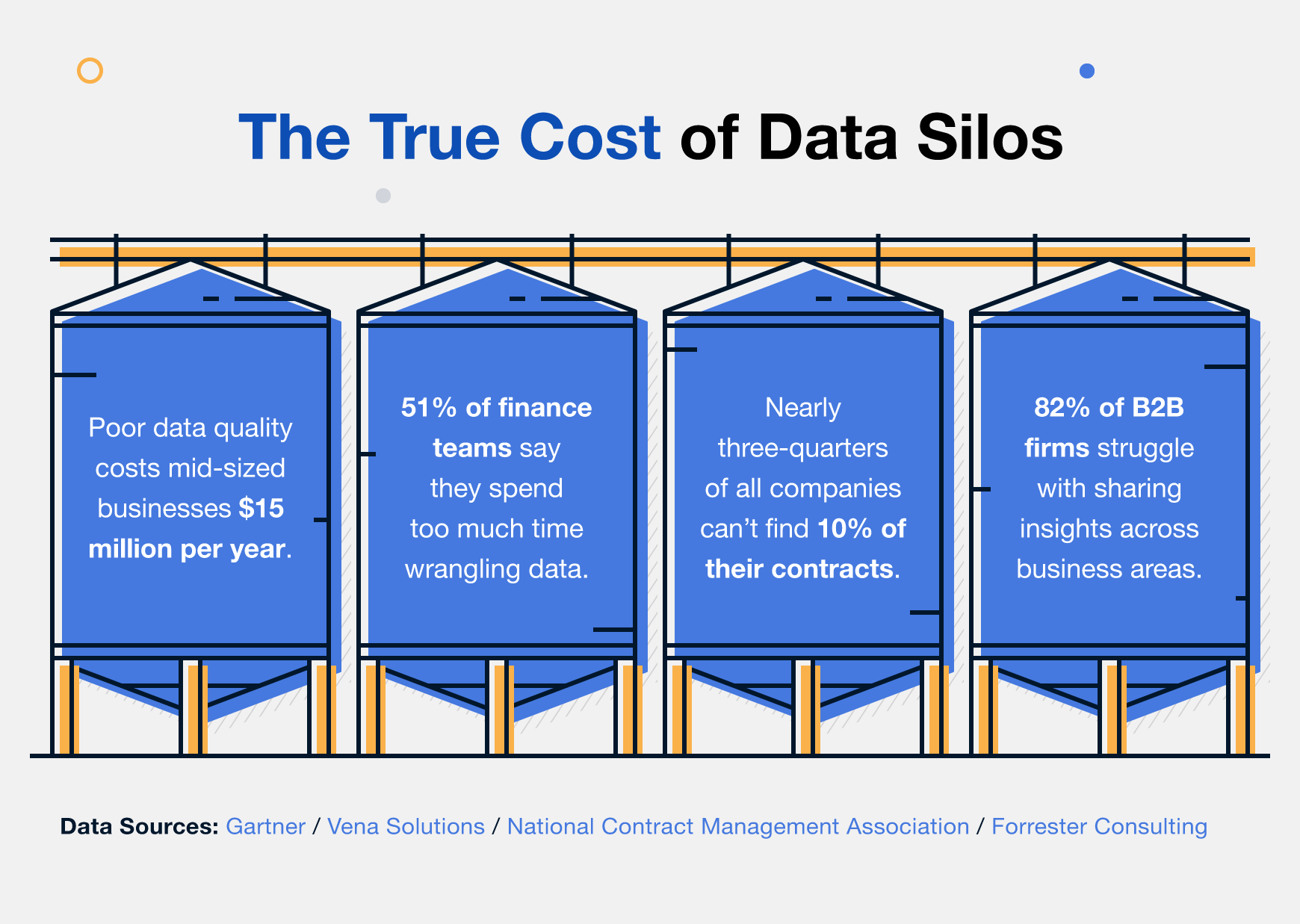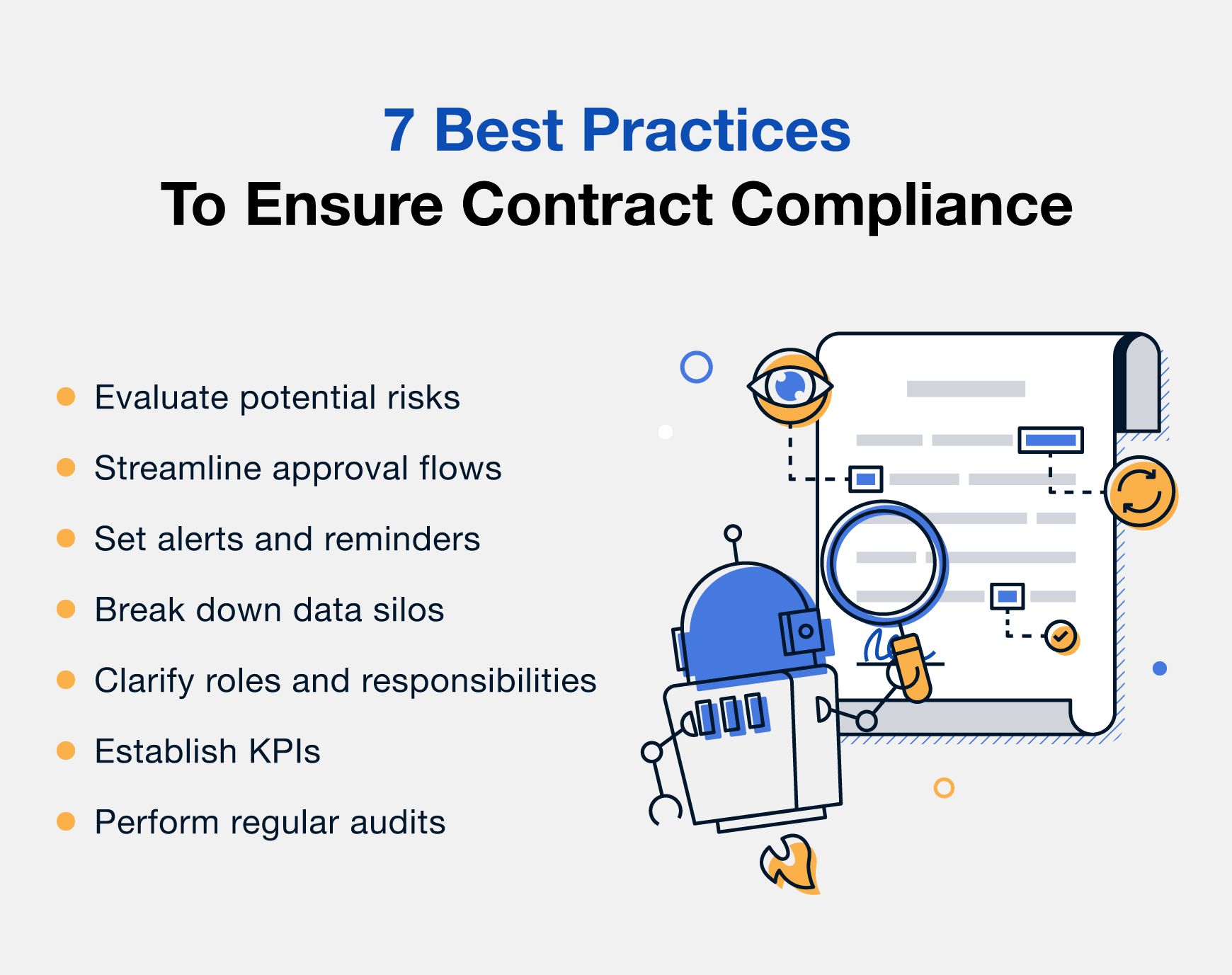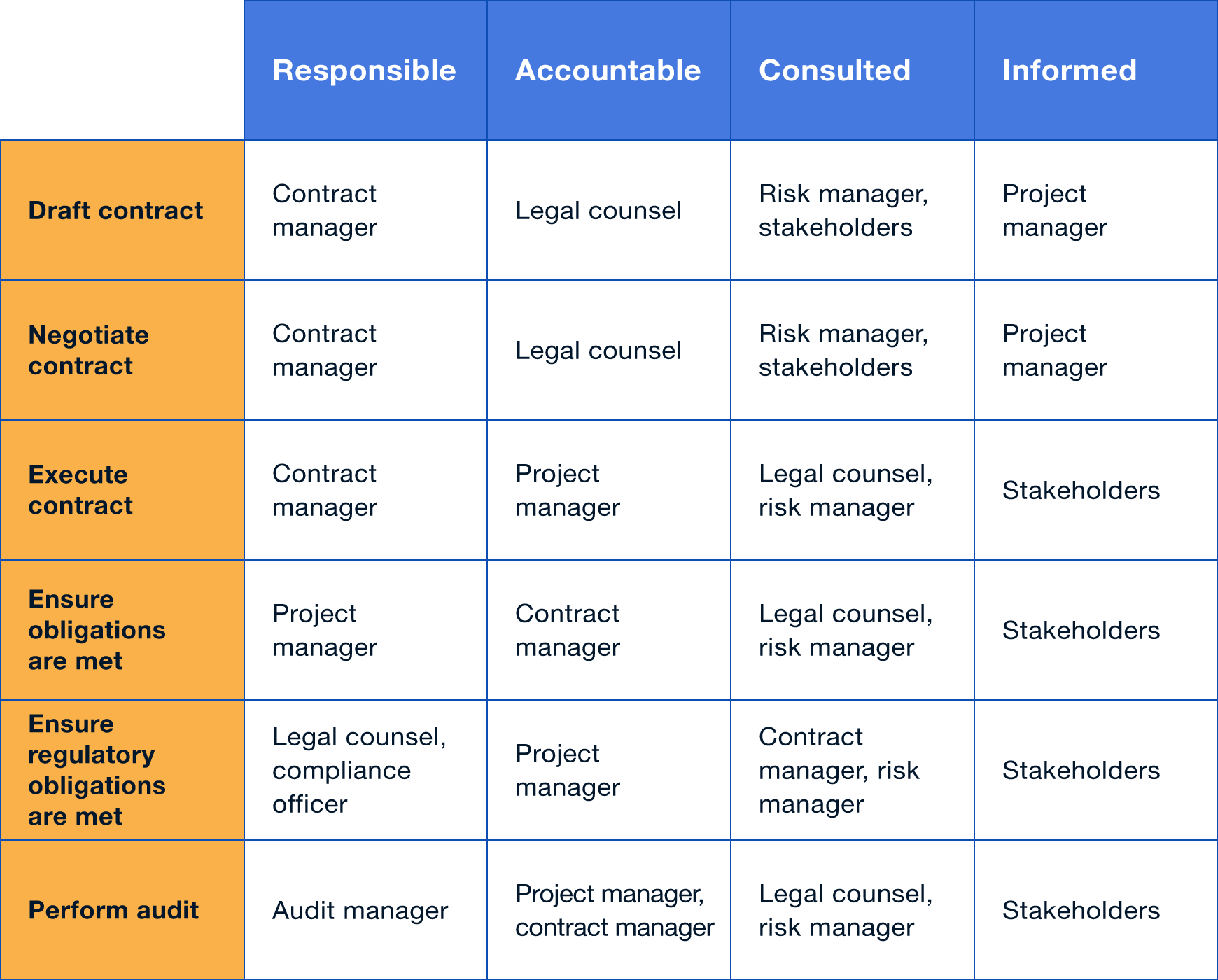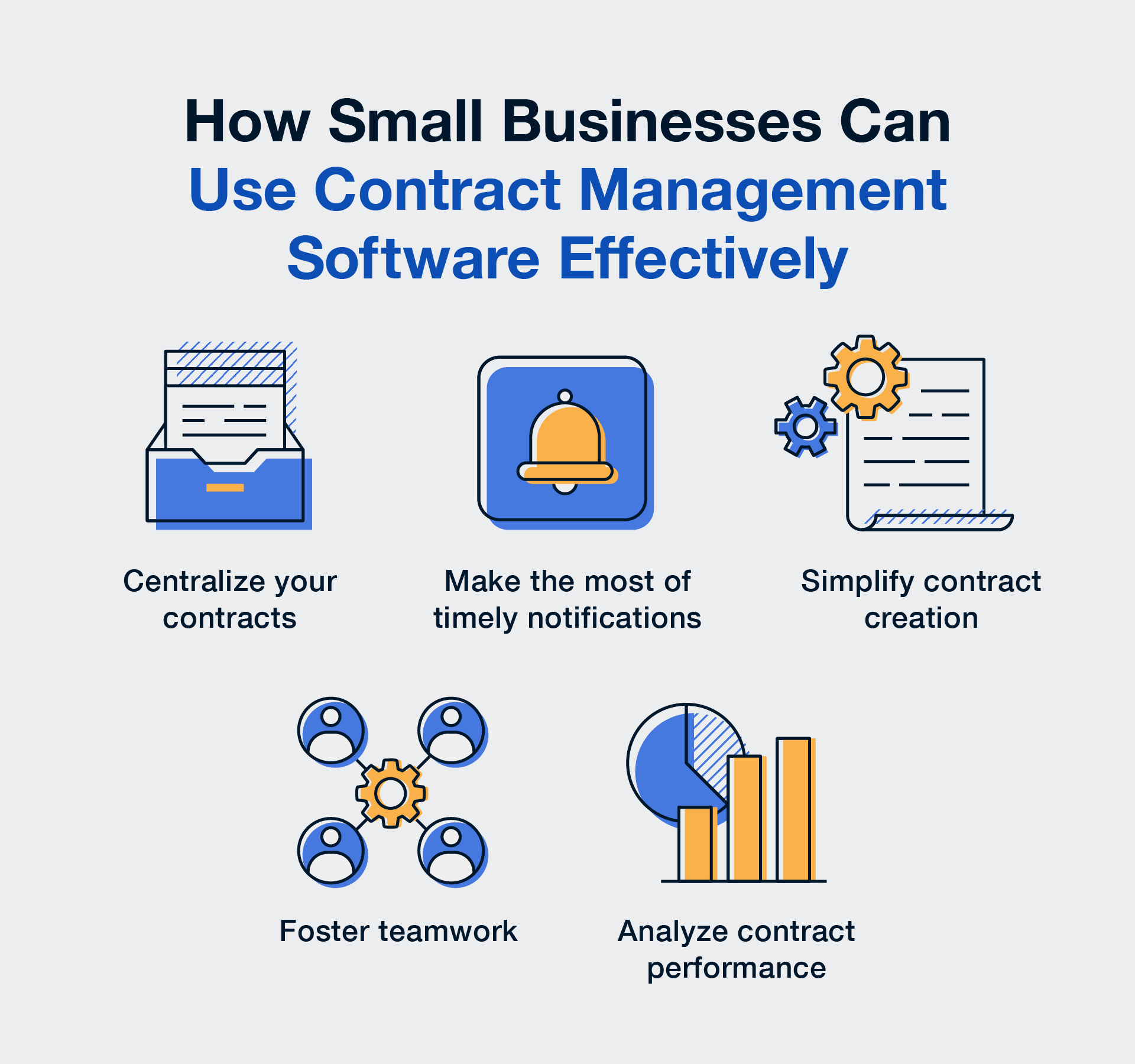Contract compliance might just be corporate America’s least favorite dance. It’s a complicated affair involving multiple parties, with steps that change on the fly. And missing a step can result in a lot worse than a spilled drink.
Every contract must be adequately understood and managed if you want to stay on the right side of the rhythm.
But don't worry.
In this guide, we’ll explain what contract compliance means, why it matters, and how you can get your compliance on without missing a beat.
TL;DR
- Contract compliance means ensuring that all parties involved fulfill their obligations according to the agreement.
- Failure to comply with contracts can lead to legal disputes, financial losses, and damage to business relationships.
- Contract management software can help streamline compliance by automating tasks like contract tracking and deadline notifications.
What Is Contract Compliance?
Contract compliance ensures that all contract parties adhere to the obligations stipulated in a written contract, as well as any regulations that might be relevant to the agreement.
When you sign on the dotted line, you accept specific responsibilities and liabilities for your part of the agreement.
From small businesses to global enterprises, contract compliance is one of the most critical steps in contract management.
Why Contractual Compliance Matters
Missing a step on the dance floor isn't a huge deal, but when it comes to contracts, you'll cause more damage than just scaring off your partner.
Contract compliance is a fundamental part of contract management. Without it, contract performance can suffer and even lead to serious legal and financial repercussions.
It’s not just about avoiding fines, penalties or lawsuits, either.
It's also about building trust between parties, mitigating risk, and maintaining valuable relationships.
By proactively managing contracts and following the terms and conditions laid out in the agreement, both parties can gain peace of mind that they're meeting their contractual obligations and expectations.
Contract Compliance Challenges
From the outside, contract compliance may seem like it’s as easy as doing the YMCA. But ask any contract manager, and they'll tell you it's much closer to the tango. Timing, communication, and technique can make all the difference.
Here are some common compliance challenges contract managers face:
Lack of Time
Things move quickly in contract management.
The speed of business today means that contract managers often juggle multiple contracts with tight deadlines, and resources are often stretched thin. That means some big responsibilities like regulatory compliance or terms and conditions reviews could fall on teams that might not be as familiar with contract management.
This can make contract compliance difficult, if not impossible.
Poorly Written Contracts
A contract is not just a piece of paper; it's a legally binding agreement that outlines the terms and conditions of a deal.
If terms and conditions are too ambiguous, it can lead to misunderstandings, misinterpretations, and even disputes between the parties involved.
And let’s face it, no one wants to go to court because of a poorly written contract
Manual Processes
Manual processes make contract compliance especially difficult.
This can include tasks like:
- Data entry
- Document storage
- Contract reviews
- Approval workflows
No one is perfect. Whether it’s a typo, a misfiled amendment, or an overlooked signature, mistakes happen.
Manual processes also make it exceedingly difficult to track deadlines, maintain quality standards, keep up with payments, and even meet obligation dates.
Working From Incorrect Versions
Contracts can be complex, with multiple versions and amendments, making it tough to ensure everyone works from the correct version.
One of the primary concerns with working from incorrect versions is that it can lead to misunderstandings and disagreements between parties.
If one party works from an outdated contract version, they may operate under different assumptions or expectations than the other party.
Missed Dates or Obligations
Contracts usually include specific timelines and deadlines, as well as obligations and requirements that must be met to remain compliant.
Not only can missing key due dates or responsibilities lead to mistrust, dissatisfaction, or even litigation, but these challenges can also become a considerable drain on resources.
Litigation is costly, but a major dent in your reputation could be catastrophic.
Data Silos
Data silos happen when data is collected and stored in separate systems or departments without the ability to share with other departments easily.
This can lead to several problems when it comes to contract compliance, including:
- Missing payment details or expiry dates
- Lost contracts or attachments
- Difficulty accessing important documents quickly
- Outdated content or inaccurate information
- Data security issues

Navigating Regulations
Regulators aren't exactly known for their leniency.
Compliance can be extremely difficult if you’re dealing with HIPAA, GDPR, or any other industry-specific regulations — especially if your team isn’t aware of these rules.
Fines, litigation, and reputational damage can all be on the line if you don’t comply with the laws in your industry or locale.
To make matters worse, they change. Sometimes with little notice. It’s like swinging at a piñata, only you get a letter from the FTC every time you miss.
How To Ensure Contract Compliance
Choreography is everything.
Whether you're trying to channel your inner “Saturday Night Fever” or signing a slew of new vendor deals, compliance takes practice and preparation.
By following these seven best practices, you can ensure contract compliance and avoid a messy legal waltz with your counterparties.
Here are seven things your organization can do to ensure compliance:

Evaluate Potential Risks
Develop a process to identify and evaluate risks that may arise from contract obligations.
This should include assessments of financial, regulatory, performance, and security risks.
It's essential to take a comprehensive approach by reviewing both the risks associated with your contracts and all of the relationships your company holds to ensure every potential problem is planned for.
Make sure to get input from the legal, financial, and operational departments to cover all your bases.
Streamline Contract Management
Managing contracts can be time-consuming and complex, but there are ways to streamline the process and help ensure compliance.
- Standardize templates: Creating templates for different types of contracts ensures that the appropriate format and language are used consistently across the board.
- Train non-legal teams: Providing training that enables non-legal teams to resolve issues can speed up the negotiation process and minimize the involvement of outside legal counsel.
- Educate everyone: Summarizing contract obligations simply and clearly so that they are easily accessible to all relevant employees can help ensure compliance and mitigate risk.
Implementing these strategies will help minimize risk and protect your business while improving the efficiency of the contract creation process.
Track Key Dates and Contract Obligations
Tracking contract obligations and important dates is essential to contract management, as it helps ensure contract compliance. Here are a few simple steps to stay ahead of all your obligations:
- Identify important clauses, deadlines, and obligations that must be fulfilled.
- Set up a monitoring process with designated team members.
- Record all changes to the contract in an amendment or addendum
- Create alerts and reminders to help keep track of key dates and obligations.
- Review the contract regularly.
Following these steps, you can fulfill your commitments and maintain healthy relationships with your business partners.
Break Down Data Silos
Breaking down data silos involves integrating information from various departments, systems, or software applications within an organization to improve collaboration, decision making, and data accuracy.
To break down data silos and improve contract compliance, your organization can:
- Implement a comprehensive contract management system that facilitates collaboration and data integration among the departments involved.
- Establish clear guidelines and processes for storing and sharing contract-related information.
- Invest in training and resources to ensure proper use and management of your data management systems.
Clarify Roles and Responsibilities
Clarifying roles and responsibilities involves defining and communicating specific tasks and accountability for each individual or department involved in the contract management process.
One effective tool is the RACI matrix, which outlines who is responsible, accountable, consulted, and informed for each task or decision.
Here’s an example of how that might look:

Assigning specific roles and responsibilities is especially crucial for organizations grappling with a lot of regulatory requirements.
In fact, you may even consider appointing a special compliance officer who will be responsible for staying up to date on any changes to applicable laws or regulations.
Establish KPIs
Establishing key performance indicators (KPIs) is crucial for contract compliance because it sets clear expectations for performance and provides a framework for measuring success.
To set effective KPIs, you’ll have to determine the most critical metrics that will be used to track progress toward contract objectives. Some common contract KPIs include:
- Contract duration
- Contract value
- Contract renewal rate
- Contract acceptance
- Contract close rate
KPIs can identify areas where corrective action may be required and help build confidence that contract outcomes can be achieved.
Perform Regular Audits
Regular audits are essential for contract compliance.
Audits should include operational and financial assessments of contract performance.
This will help ensure that all contract obligations are accurately fulfilled on time, reducing any risks associated with noncompliance.
And with optical search recognition (OCR), performing audits is easier than ever. OCR works by digitizing and extracting text from contracts, which can be easily searched and analyzed for crucial information, saving time and effort in the audit process.
Stay Compliant With ContractSafe
With ContractSafe's contract management software, companies can store all of their legal documents in one secure, centralized location, making it easy to keep track of important dates and deadlines throughout each stage of the contract’s lifecycle, so you’re always on beat.
Additionally, ContractSafe's powerful search feature allows users to quickly find and extract specific information from their contracts, ensuring that they are always up to date with their legal obligations.
By using ContractSafe, companies can streamline their legal operations and protect themselves from potential legal risks associated with noncompliance.
Want to see it in action? Sign up for a free demo today.

















